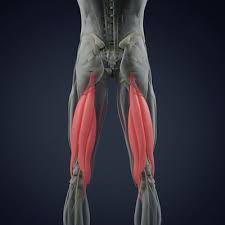Neuroma Pain
Neuroma
- Mortons Neuroms or Intermetatarsal Neuroma is a common deformity of the foot which results from abnormal pressure on the ball of the foot especially between the 3rd and 4th bases of the toes in the ball of the foot.
- Mapping these abnormal forces is important in the diagnosis and treatment. Click Here
- It is ultimately critical to offload these forces on these sensory nerves through the use of custom foot orthotics.
- Many times the leg muscles are tight (hamstrings and calf muscles). When these muscles are tight, abnormal force is displaces through the bottom of the ball of your feet, (metatarsals). Long standing repetitive forces cause swelling, bleeding and scaring of these sensory nerves.
- 3D Pressure Mapping using 3DO Imaging provides access to the underlying cause of pain my following the center of body mass through the neuroma.
3DO Imaging
- Mapping these abnormal forces is important in the diagnosis and treatment. Click Here
- It is ultimately critical to offload these forces on these sensory nerves through the use of custom foot orthotics.
 Morton's Neuroma:
Morton's Neuroma:
Morton's neuroma is a benign thickening of the tissue around a nerve in the ball of your foot, most commonly between the third and fourth toes. It can cause pain, numbness, and tingling in the affected toes. Morton's neuroma is more common in women than in men, and it is often associated with wearing high-heeled or narrow shoes.
Metatarsalgia:
Metatarsalgia is a general term for pain in the ball of the foot. It can be caused by a number of things, including;
- Morton's neuroma,
- Stress fractures,
- Sesamoiditis.
- Metatarsalgia i
These often treated with conservative measures such as rest, ice, compression, and elevation. However, surgery may be necessary in some cases.
Neuralgia:
Neuralgia is a type of pain that is caused by damage or irritation to a nerve. It can be characterized by sharp, shooting, or burning pain. Neuralgia can occur in any part of the body, but it is most common in the face, back, and hands. There are a number of different causes of neuralgia, including trauma, infection, and tumors. Treatment for neuralgia depends on the underlying cause.
Plantar Neuroma:
A plantar neuroma is a type of neuroma that occurs in the sole of the foot. It is most commonly found between the third and fourth toes. Plantar neuromas can cause
- Pain
- Numbness,
- Tingling
Intermetatarsal Neuroma:
An intermetatarsal neuroma is a type of neuroma that occurs between the metatarsal bones in the foot. It is most commonly found between the third and fourth toes. Intermetatarsal neuromas can cause pain, numbness, and tingling in the affected toes. Intermetatarsal neuromas are often treated with conservative measures such as rest, ice, compression, and elevation. However, surgery may be necessary in some cases.
Nerve entrapment:
Nerve entrapment is a condition in which a nerve is compressed or trapped. This can cause pain, numbness, and weakness in the area supplied by the nerve. Nerve entrapment can occur anywhere in the body, but it is most common in the hands, wrists, elbows, and feet. There are a number of different causes of nerve entrapment, including trauma, repetitive movements, and swelling. Treatment for nerve entrapment depends on the underlying cause.
Morton's disease is another name for Morton's neuroma.
Morton's neuropathy:
Morton's neuropathy is another name for Morton's neuroma.
Intermetatarsal space neuroma:
An intermetatarsal space neuroma is another name for Morton's neuroma.
Interdigital neuroma:
An interdigital neuroma is another name for Morton's neuroma.
Labels: Foot Pain, Gait problems, Mortons Neuroma, Neuroma








0 Comments:
Post a Comment
Subscribe to Post Comments [Atom]
<< Home